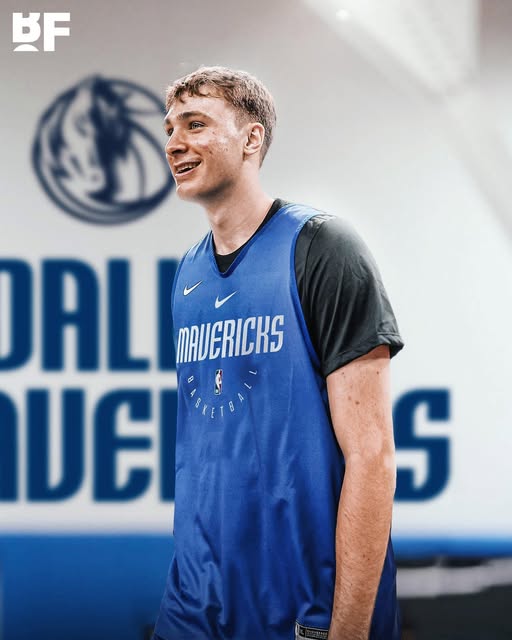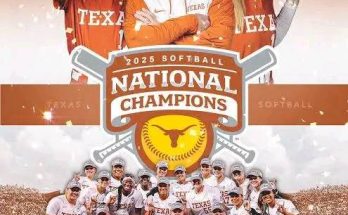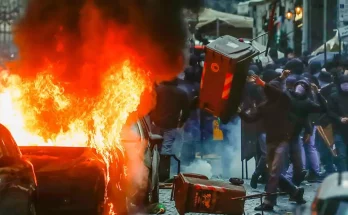Cooper Flagg’s pre-draft workout with the Dallas Mavericks didn’t just live up to expectations—it blew them out of the water. According to a league source with direct knowledge of the session, Flagg was “even better” than they initially expected, a bold statement considering the sky-high anticipation that surrounded the young phenom heading into the visit. With the NBA Draft fast approaching, teams are finalizing their big boards, and Flagg’s stock—already seen as top-tier—may have just cemented itself at the absolute peak thanks to a dazzling private display of skill, polish, and maturity beyond his years.
The Mavericks, long rumored to be intrigued by Flagg’s unique blend of size, versatility, and defensive tenacity, walked away from the workout with renewed conviction. What they witnessed inside their facility was more than a good showing—it was a performance that reaffirmed why Flagg has been called a generational talent, a franchise-changing player, and perhaps the most complete prospect since LeBron James came out of high school.
At 6-foot-9 with a 7-foot wingspan, Flagg has always passed the eye test physically. But what impressed scouts and executives in the Mavericks’ front office wasn’t just his measurements or vertical leap—it was the fluidity in his footwork, the sharpness in his reads, and the confidence with which he operated both on and off the ball. The workout was reportedly designed to test his full arsenal: pick-and-roll reads, off-the-dribble shooting, post footwork, closeout recognition, and three-point consistency. By every account, Flagg passed with flying colors.
One observer described the session as “methodical brilliance,” noting that Flagg was able to slow the game down in a workout setting the same way elite players do in actual NBA contests. His understanding of spacing, tempo, and shot selection stood out, even when compared to veterans who have gone through similar pre-draft visits. The Mavericks didn’t need long to recognize they were dealing with a player who could start contributing immediately—and who had the upside to develop into a true cornerstone.
In many cases, team workouts serve as more of a formality for projected top picks, a way for franchises to get a final look at their body language, attitude, and conditioning. But Flagg turned his session into a statement. “He approached it like a veteran,” said the source. “Not like a teenager about to be drafted—like a pro who’s been through this already.”
Flagg’s readiness has always been one of his most talked-about traits. After dominating at Montverde Academy and putting together a breathtaking run on the AAU and FIBA circuits, the buzz around him never waned. Scouts admired not just his highlight-reel dunks or chase-down blocks, but the nuances in his game: the way he talks on defense, the precision of his help-side rotations, and his uncanny timing on both ends of the court. That maturity and presence came through loud and clear in Dallas.
What may have elevated his impression with the Mavericks, though, was his shooting. Long considered a solid perimeter threat, Flagg reportedly caught fire during live shooting drills, knocking down NBA-range threes with minimal effort and showing off improved mechanics. He hit from the corners, above the break, and off movement—an area that scouts had previously pegged as a “work in progress.” If that part of his game continues to evolve at this pace, he becomes nearly impossible to scheme against.
Defensively, Flagg has been compared to the likes of Andrei Kirilenko and Scottie Pippen for his versatility and instincts, and his workout only reinforced those comparisons. He seamlessly switched from guards to forwards, challenged shots at the rim without fouling, and disrupted passing lanes during five-on-five segments. Mavericks evaluators reportedly noted that he communicates like a veteran anchor, calling out coverages and barking out instructions in real time. That kind of defensive leadership is rare in any rookie, let alone a 17-year-old still weeks away from his first NBA game.
Perhaps most impressive was Flagg’s demeanor. Despite the pressure and presence of high-level decision-makers in the gym, he never appeared overwhelmed. He remained poised, engaged, and curious—asking questions, making adjustments, and even offering encouragement to teammates and staffers helping run the workout. “There’s a certain energy he brings into the room,” said the source. “It’s magnetic. He makes people believe in what’s possible.”
Flagg’s background suggests this kind of maturity isn’t an act. Raised in Maine, he’s long been described as grounded, team-oriented, and singularly focused on his craft. His decision to play his one college season at Duke—despite multi-million dollar NIL offers from other programs—was seen as a reflection of his values. He wanted to be coached hard, challenged daily, and compete at the highest level. That same drive was evident during his time in Dallas, and it resonated deeply with a Mavericks organization known for valuing culture as much as talent.
With Luka Dončić in place as the franchise centerpiece and Kyrie Irving returning for another season, the Mavericks have been evaluating how best to complement their All-NBA backcourt. Flagg, though still a teenager, may offer precisely what they need: a positionless defensive savant who doesn’t need the ball to impact winning, yet possesses the offensive toolkit to grow into a No. 2 or even No. 1 option down the line.
The Mavericks hold a pick just outside the top five, but there’s a growing belief around the league that they may try to trade up—especially if Flagg slips past the first two selections. Dallas has assets, ambition, and a win-now window that makes adding a cost-controlled star-in-the-making an enticing proposition. Whether they can maneuver into position to draft Flagg remains to be seen, but one thing is certain: they won’t forget what they saw during his workout anytime soon.
League executives from other teams who got word of the Mavericks’ reaction have also doubled down on their evaluations. “Everyone knew he was good,” said one Eastern Conference scout. “Now it’s more like, ‘How soon until he’s one of the best players in the league?’” That shift—from potential to inevitability—is what separates the good prospects from the truly great ones. And right now, Flagg is trending toward the latter.
Flagg’s rise hasn’t been meteoric in the sense of a late bloomer or a player who came from nowhere. He’s been under a microscope for years, and he’s handled that attention with remarkable grace. But what his time in Dallas revealed is that even amid all the hype, there’s still room for surprise. He’s better now than most thought he would be. And if he’s this good already, the ceiling might be even higher than initially projected.
As the draft nears, and more teams finalize their boards and weigh the risks of trading up, Flagg’s name will be one of the most talked-about across front offices. For a player once labeled as “next up,” he might already be “right now.” And for a Mavericks franchise looking to bridge the gap between contender and champion, Flagg may have just shown them the missing piece.



